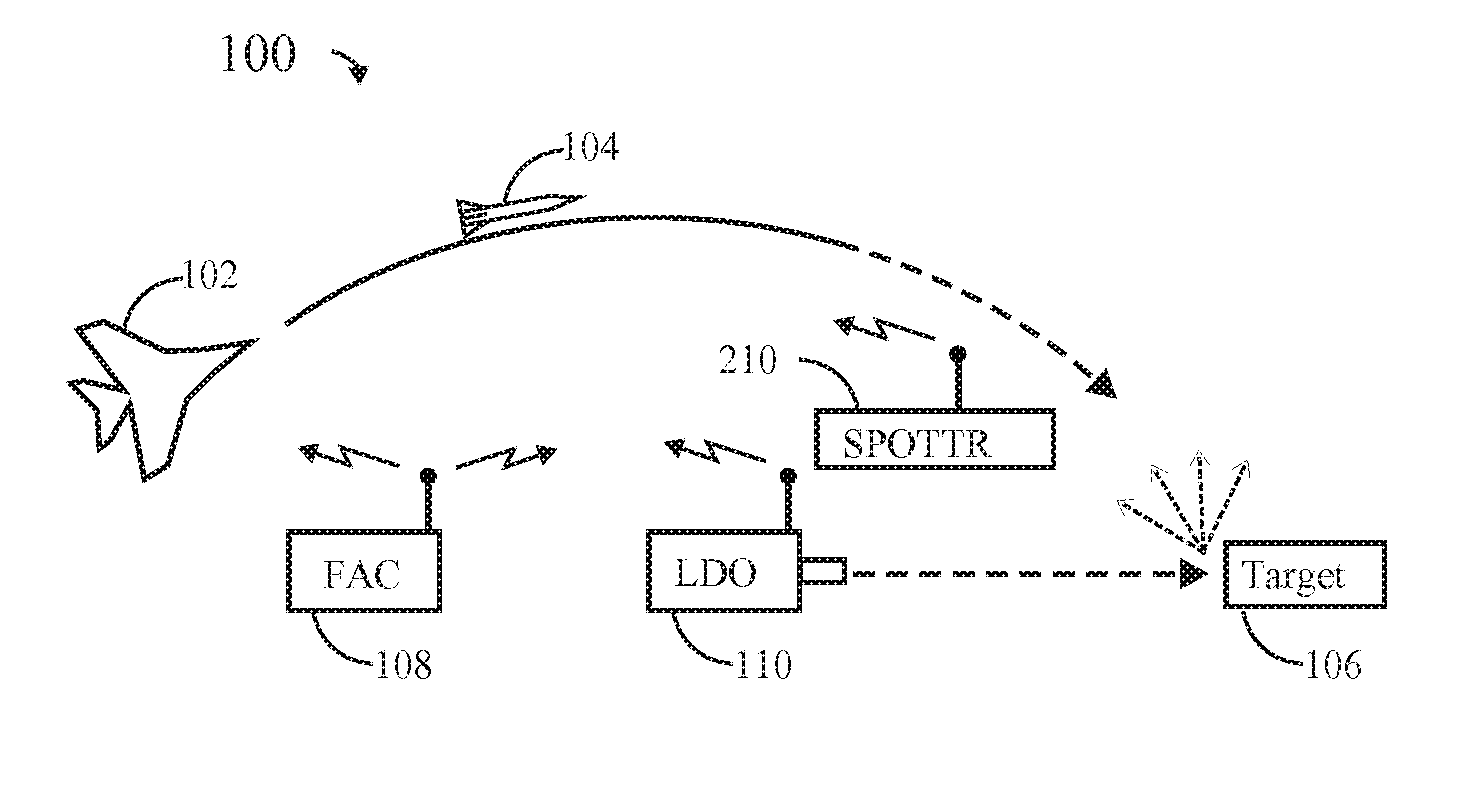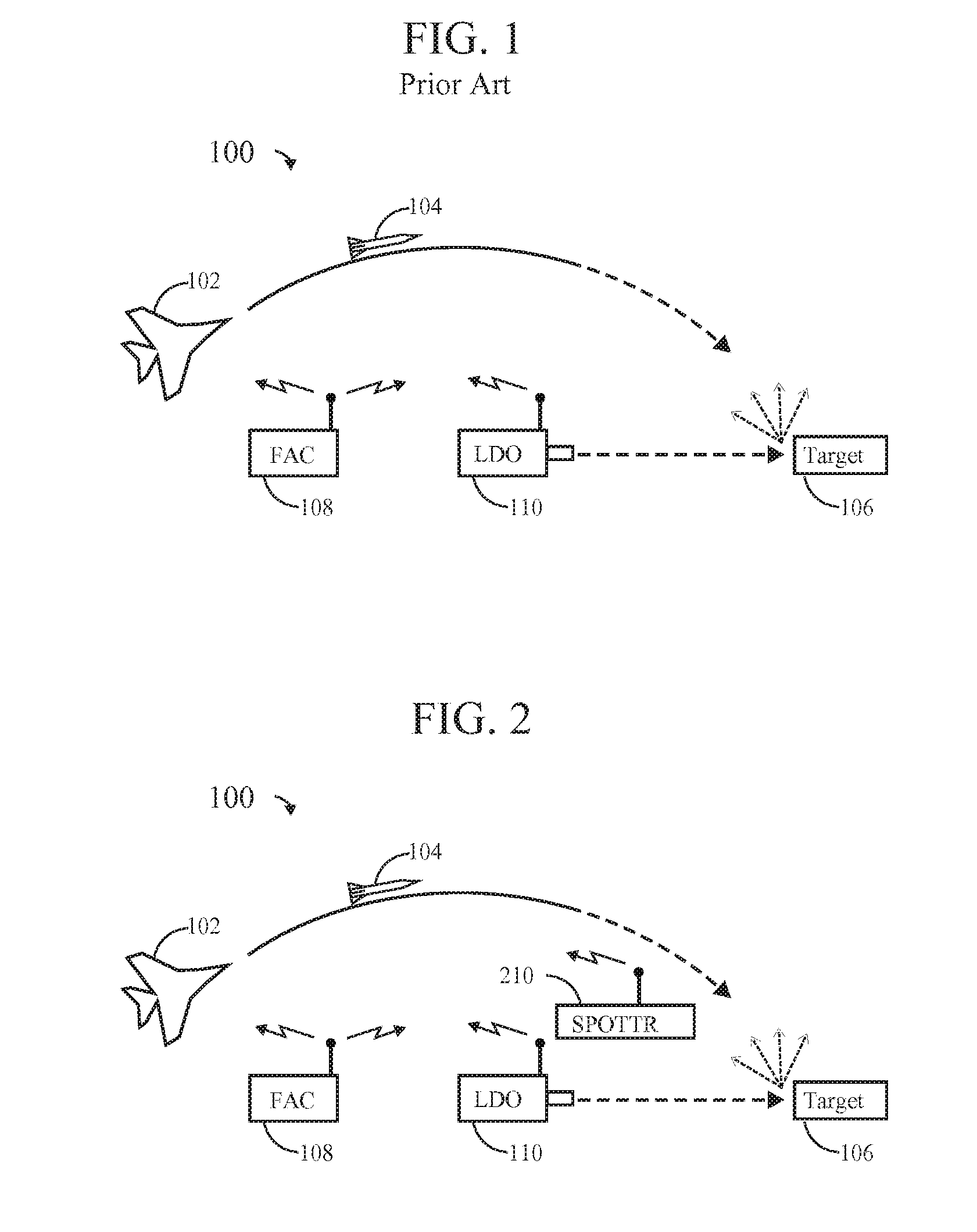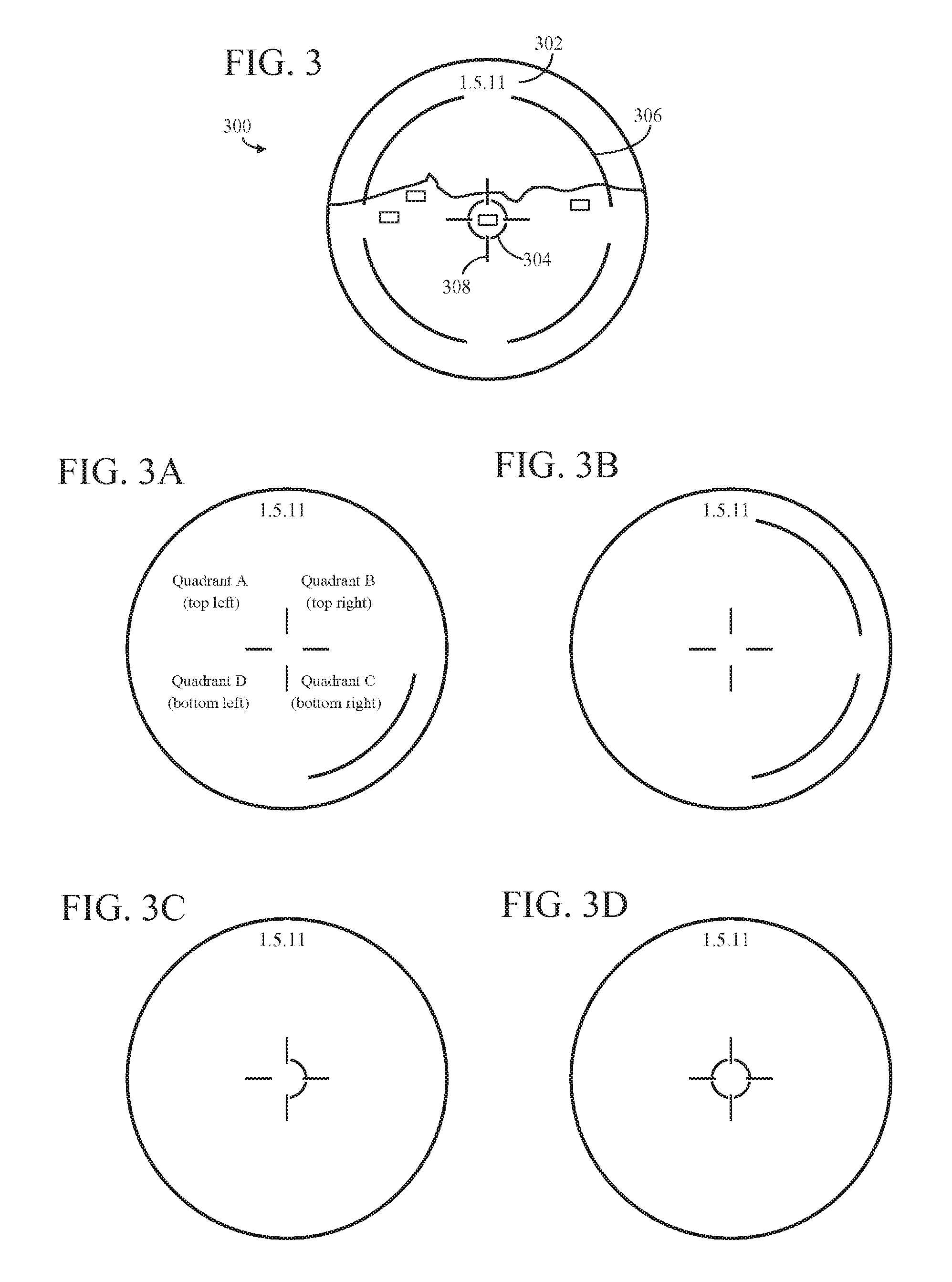Laser spot tracker and target identifier
a laser spot tracker and target identification technology, applied in the field of laser-guided weapon optical receivers, can solve the problems of inability to reliably identify, greatly reduce the accuracy of weapons, and the vulnerability of laser designation to weather conditions, so as to speed up the targeting process, reduce the time for target confirmation, and increase the combat capability
- Summary
- Abstract
- Description
- Claims
- Application Information
AI Technical Summary
Benefits of technology
Problems solved by technology
Method used
Image
Examples
Embodiment Construction
[0087]The invention is generally directed to a device (Stabilized Portable Optical Target Tracking Receiver; referred to herein as “SPOTTR”) for spotting reflections from lasers illuminating targets, including decoding and displaying laser codes, and to deploying the device in a battlefield scenario.
[0088]FIG. 2 shows a target tracking receiver 210 deployed in the battlefield scenario 100 of FIG. 1.
[0089]The target tracking receiver (SPOTTR) 210 can provide accurate stand-off verification of target illumination by airborne or ground laser designators (110). This object may be achieved by use of a Stabilized Portable Optical Target Tracking Receiver (SPOTTR).
[0090]SPOTTR is designed to allow an operator (Joint Terminal Attack Controller (JTAC)) on the ground near the target area, to detect and decode laser energy from an airborne or ground laser designating military targets. SPOTTR greatly increases the assurance that ordinance will be delivered to the intended target, critical when ...
PUM
 Login to View More
Login to View More Abstract
Description
Claims
Application Information
 Login to View More
Login to View More - R&D
- Intellectual Property
- Life Sciences
- Materials
- Tech Scout
- Unparalleled Data Quality
- Higher Quality Content
- 60% Fewer Hallucinations
Browse by: Latest US Patents, China's latest patents, Technical Efficacy Thesaurus, Application Domain, Technology Topic, Popular Technical Reports.
© 2025 PatSnap. All rights reserved.Legal|Privacy policy|Modern Slavery Act Transparency Statement|Sitemap|About US| Contact US: help@patsnap.com



